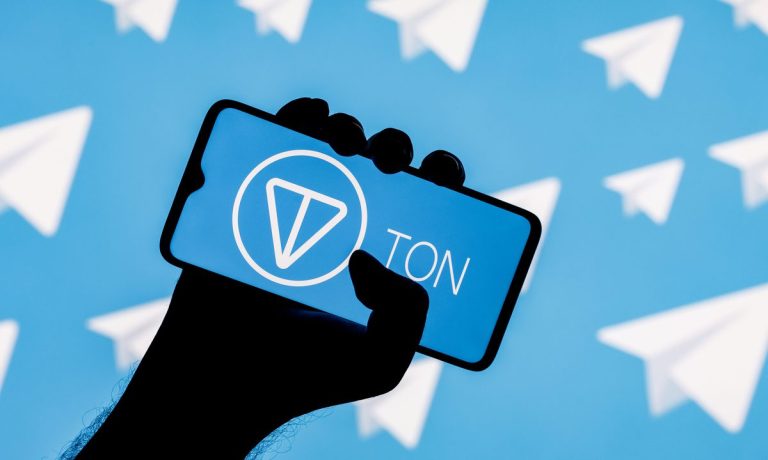
Telegram messaging service announced this week that its 550 million users can now send and receive payments using the Toncoin cryptocurrency in real time.
Using a new digital wallet, Telegram users can send TON coins “directly within Telegram chats … without transaction fees to any Telegram user,” the company said on Twitter. “With this service, you’ll no longer need to enter long wallet addresses and wait for confirmations.”
Toncoins can be bought directly with a debit card or through crypto exchanges, or transferred from other digital wallets, the company said.
It’s just the latest example of the cryptocurrency payments channel being embraced by social media and messaging apps, most notably Meta’s two-billion-customer WhatsApp messaging service, which added support for the Paxos stablecoin in December, after Meta abandoned its Diem stablecoin project.
See also: Is Paxos the New Diem? The Stablecoin Issuer’s Facebook Pilot Just Expanded to 2B WhatsApp Customers
More recently, Twitter expanded the use of crypto, which began in September when then-CEO Jack Dorsey added bitcoin tipping capabilities using payments provider Strike’s API.
Read more: Twitter Adds Strike API for Tips Paid in Bitcoin
And last week — just days before the company’s board agreed to sell the company to crypto fan and Tesla CEO Elon Musk — Twitter announced a partnership with payments processor Stripe that will let creators and small entrepreneurs accept payment in the USD Coin stablecoin, with others to follow.
See here: Stripe Rolls out Crypto Payment Capabilities, Signs Twitter on as First User
Musk is a strong supporter of crypto payments, having announced plans to sell Tesla’s electric cars for bitcoin before quickly pulling back over the cryptocurrency’s dismal environmental record. He also allowed users of his beloved dogecoin — a memecoin that is gaining traction in payments — to purchase Tesla merchandise, although not cars, in DOGE.
What these social media and messaging companies haven’t done yet, to a large extent, is monetize their role as a payments rail. In part that’s because attracting and maintaining users is generally the primary goal.
Still, as crypto payments gain traction for small day-to-day payments, very small transaction fees can add up on networks with hundreds of millions or billions of users — and most cryptocurrencies can be divided into tiny pieces that would make this easy to do. Each bitcoin can be broken into 100 million satoshis, for example.
While a Twitcoin isn’t necessary for monetization, there’s also control — using bitcoin or dogecoin ultimately means using a currency run not just by another company, but often by a foundation of even a DeFi-style DAO, with no central management at all.
Certainly in Telegram’s case that was one aspect of the TON project, which began as an in-house project four years ago.
TON of trouble
For Telegram, Toncoin has been a long time coming.
Long before Meta’s June 2019 plan to create the Libra (later Diem) stablecoin that would be usable as a payments currency by any user of Facebook anywhere, there was Telegram’s TON blockchain project: announced in January 2018, killed by the Securities and Exchange Commission (SEC) in July 2020, and resurrected that August by a community of developers who believed in the project.
The TON blockchain — Telegram Open Network was its name until May 2020 — was launched by the messaging service’s CEO, Pavel Durov, at the height of the “Crypto Winter” market collapse. Yet it quickly raised $1.7 billion from investors in what the company claimed was not an initial coin offering (ICO) of the type the SEC had just begun cracking down on. That’s because the billions of what were then called gram tokens were pre-sold to what the SEC calls “accredited investors” — meaning wealthy or institutional — under a section of the Securities Act that makes it far easier than a traditional public sale.
Much litigation later, Telegram agreed to an $18.5 million fine and to return the remaining $1.2 billion to investors after the SEC said the grams sale was a pre-sale of securities and selling them to the public would be illegal.
Read more: Telegram Consents To $18.5M SEC Penalty
There were differences from Libra, most notably that its token — renamed Toncoin after Telegram departed — was not a stablecoin. Also, it was not Facebook, and Durov was not Mark Zuckerberg, both of which were widely distrusted around the world.
See more: Facebook Diem: Move Fast, Break Things, Then Crash Into a Wall
But like Diem, the open-source project lived on after its social media mothership moved on, with outside developers continuing work on TON — an acronym no more — and renaming its native token the Toncoin.
Also read: Facebook Unloads Crypto Unit Diem to Silvergate Capital for $200M